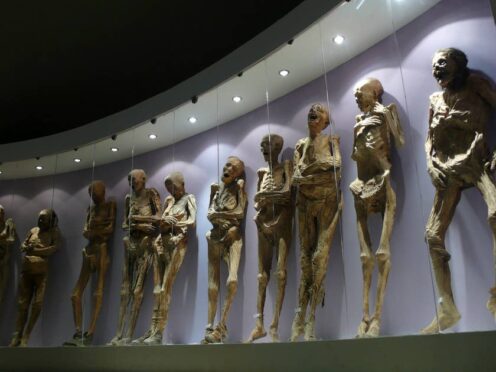
Mexico’s lead archaeology agency has accused the Mexican city of Guanajuato of mistreating the Central American nation’s famous mummified artefacts.
The National Institute of Anthropology and History (INAH) said that, during recent museum renovations where the 19th-century corpses were, an arm came off of one of the bodies.
INAH announced on Monday that it would demand answers from the federal government.
The archaeology agency also intends to apply for records of the renovation, the permits, and the government workers involved.
“These events confirm that the way the museum’s collection was moved is not the correct one and that far from applying proper corrective and conservation strategies, the actions carried out resulted in damages, not only to this body,” the institute wrote in a statement.
“It appears that this situation is related to a lack of knowledge about proper protocols and the lack of training of the personnel in charge of carrying out these tasks.”
INAH did not say what or, if any, other bits had fallen off the mummies.
The preserved corpses were unintentionally mummified when they were buried in crypts in a dry, mineral-rich soil environment in the mining state of Guanajuato.
Some still have hair, leathery skin and their original clothing.

Enjoy the convenience of having The Sunday Post delivered as a digital ePaper straight to your smartphone, tablet or computer.
Subscribe for only £5.49 a month and enjoy all the benefits of the printed paper as a digital replica.
Subscribe